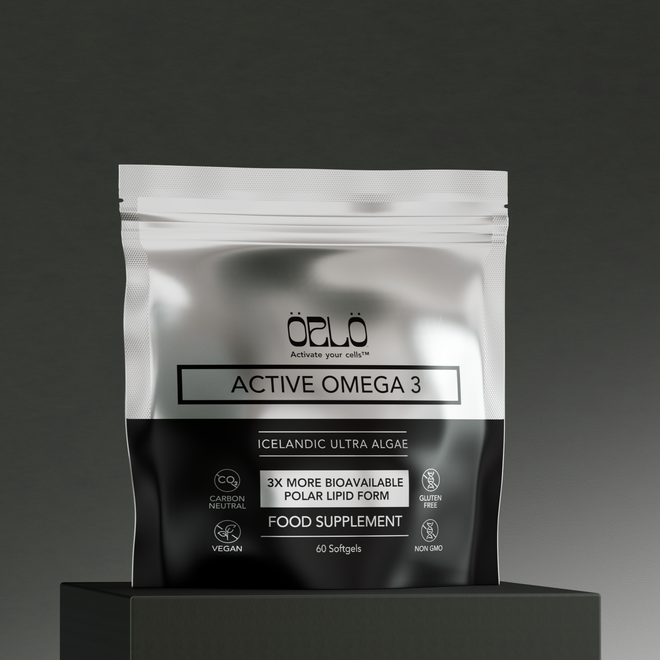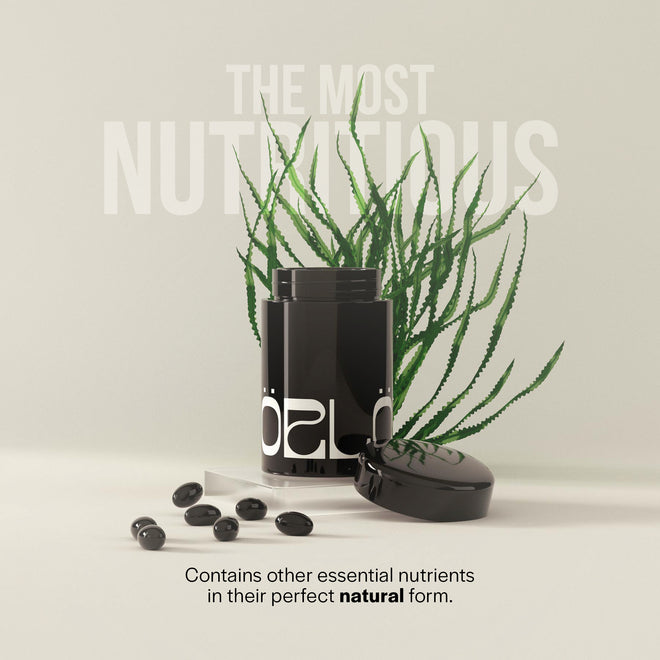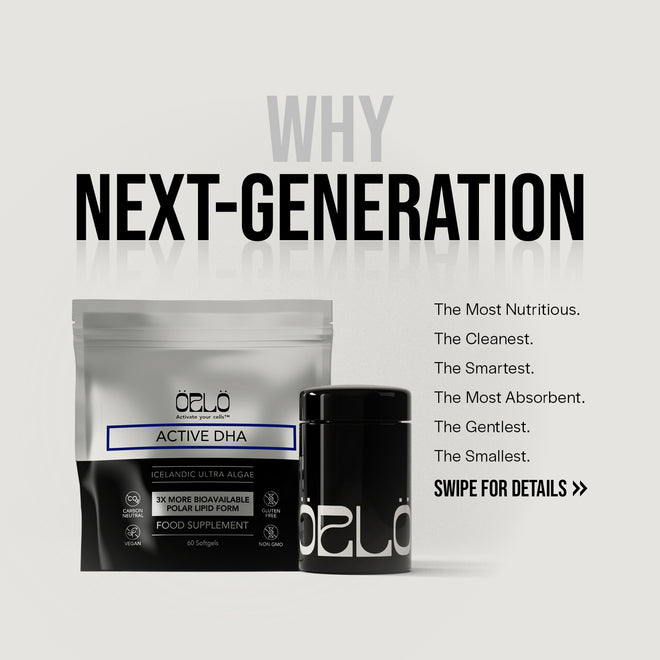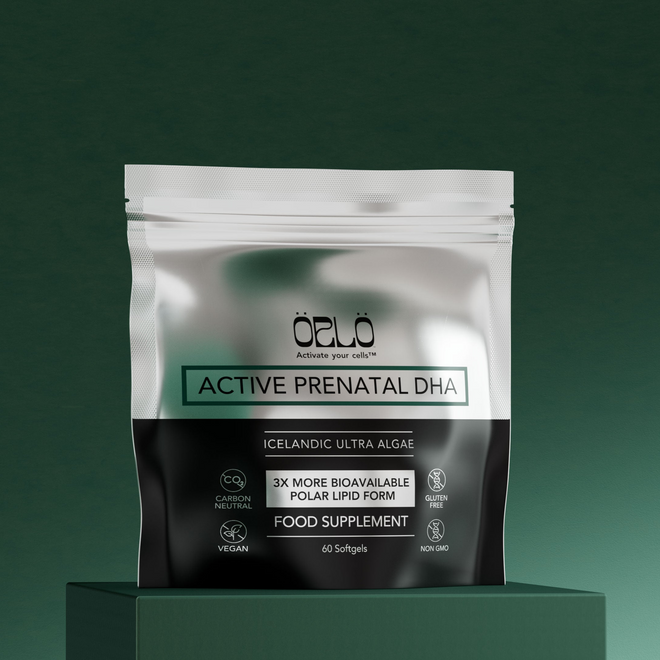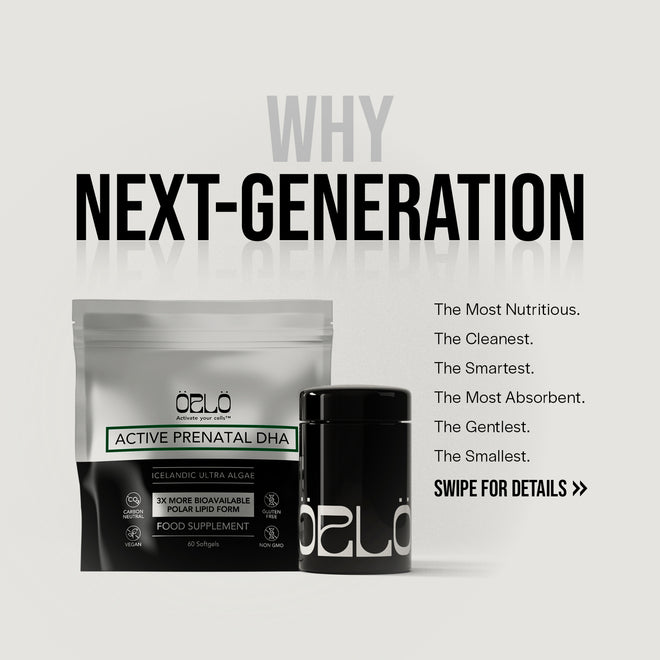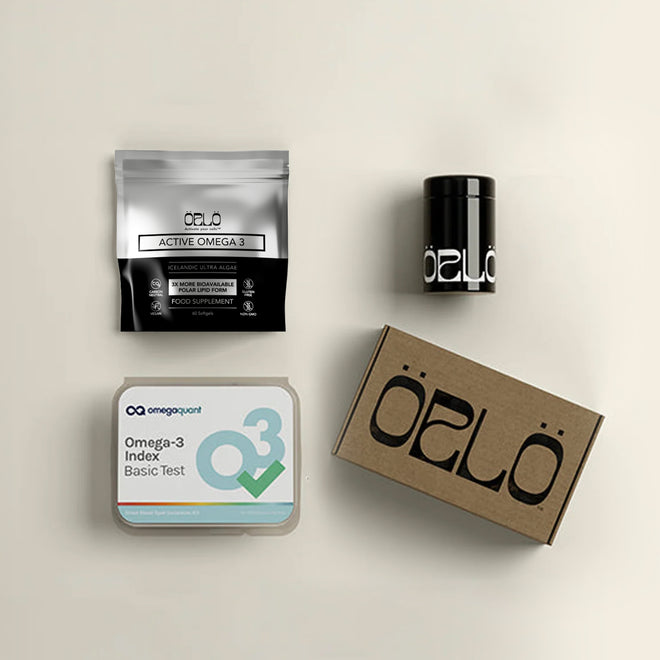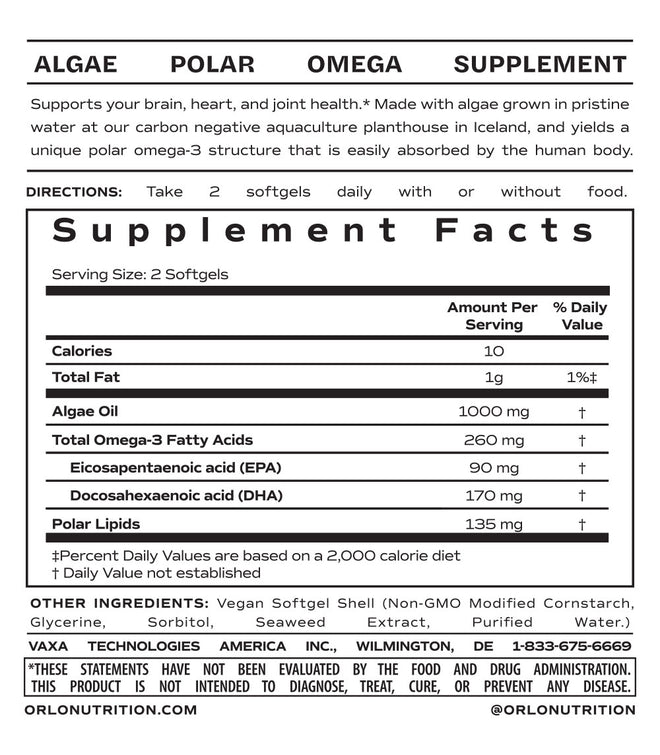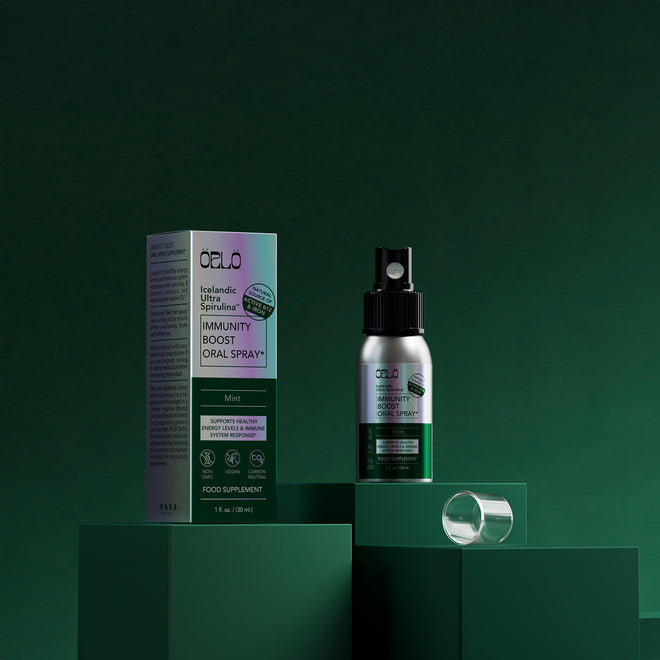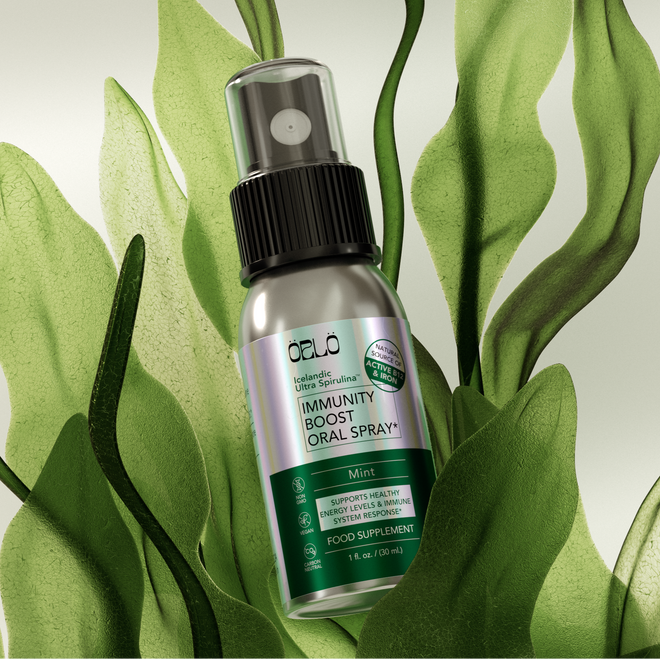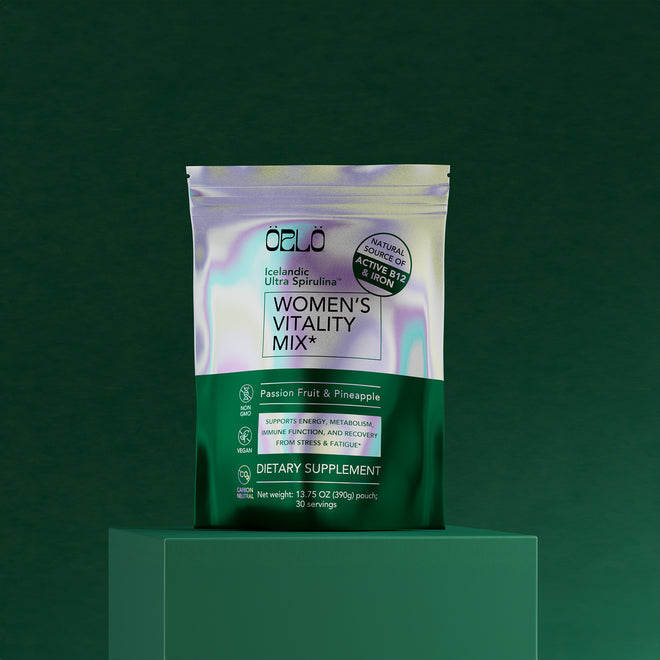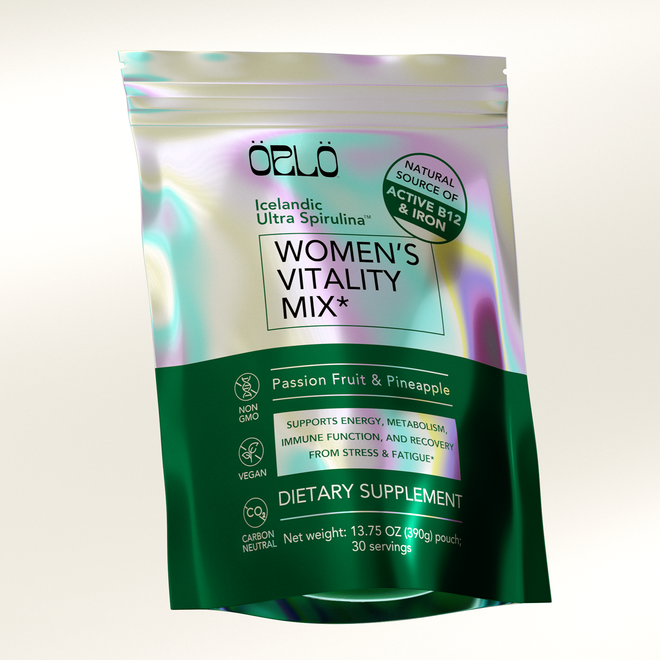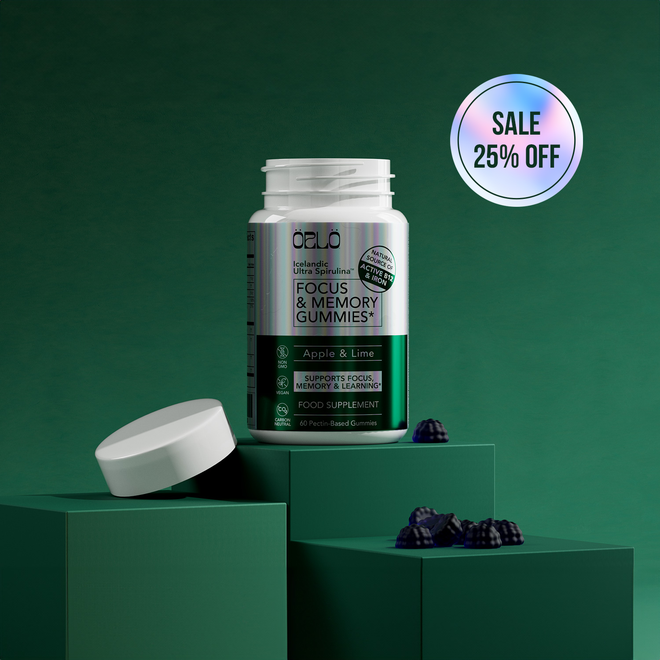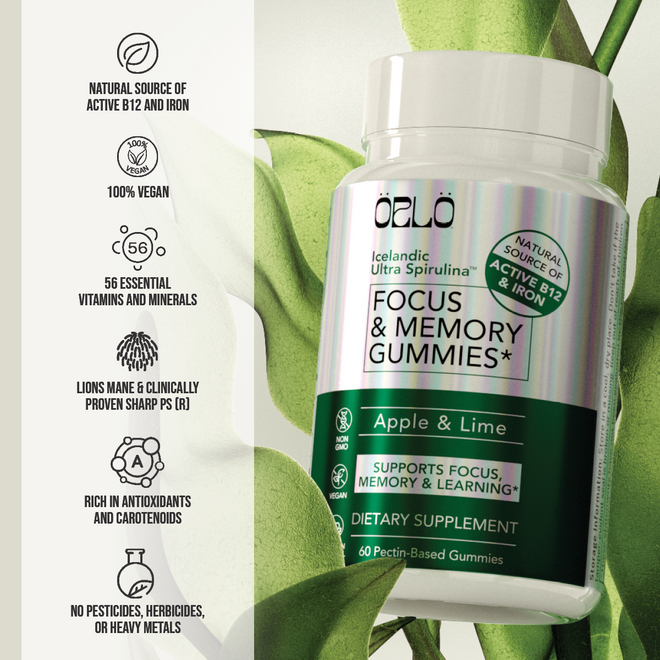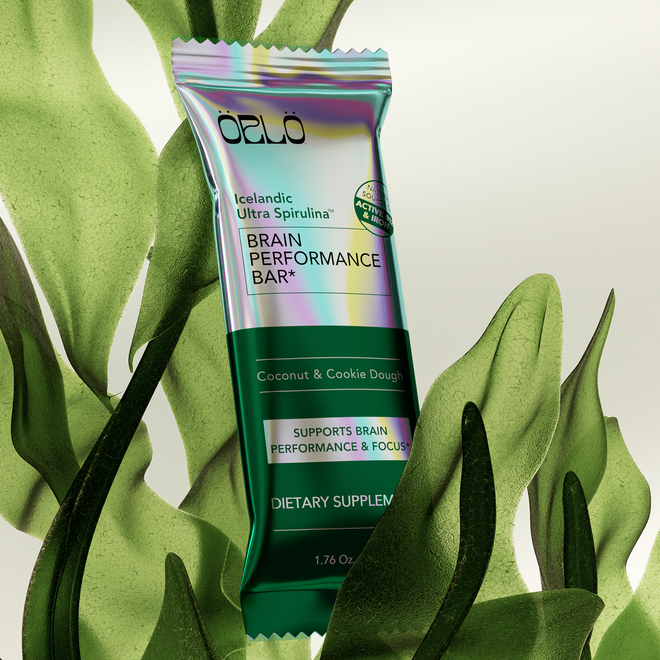25% Off - use code: HOLIDAYS
Nutrition, Fitness, And Living Well Over 50 With David Stewart
Watch the episode here
The media has made people believe that they should dread reaching the age of 50. They show people in that age group as if something went horribly wrong. But nothing will be wrong if you stay healthy. And that means sleeping, moving, getting the right nutrients, not overstressing, and more. There's still a lot that you can do to stay healthy and it's not too late to start.
Join Corinna Bellizzi as she talks to the Founder of AGEIST and SuperAge, David Harry Stewart about living well over 50. Discover how you can stay fit and healthy just like David on today's episode.
Key takeaways from this episode:
- AGEIST helps people realize what being 50 years old really looks like
- The 5 big rocks of healthy aging are sleep, movement, nutrition, de-stressing, and purpose/community
- For David, Cold Water therapy is better than Cryotherapy
- Using fitness trackers like WHOOP can help you age healthily
- Trust your belief system
Guest Social Links:
Official Website - https://davidharrystewart.com/
LinkedIn - https://www.linkedin.com/in/david-harry-stewart-0127466/
Instagram - https://www.instagram.com/dhstewart/?hl=en
Twitter - https://twitter.com/dhstewart
AGEIST - https://www.ageist.com/YBL/
SuperAge - https://superage.com/
---
Nutrition, Fitness, And Living Well Over 50 With David Stewart
In this episode, we are going to dig deeper into healthy aging as I introduce you to my friend, David Harry Stewart. He is the Founder and the face of AGEIST. He is a passionate champion of the modern 50-plus lifestyle and a leading authority on the mindset and aspirations that drive this influential demographic. As the go-to reference for people in the 50-plus age group, he frequently shares his expertise and insights with major media publications, including the Wall Street Journal, The Times of London, CNN, South China Morning Post, Forbes, and Fortune. He also consults for a wide range of Fortune 500 brands and businesses. David Harry Stewart, welcome to the show.
How are you?
I'm great. First, I'd like to ask you what nutrition without compromise means to you.
You try and eat the best you can to become the best version of yourself. You move up the ladder from intentionally harming yourself to unintentionally harming yourself, and then you get into optimizing.
Eat the best you can to become the best version of yourself.
You are moving up that ladder. On that topic, I understand that in your history, you've battled some health issues yourself that ultimately have helped you lean into this whole work that you're doing around rebranding what it is to be a modern 50-plus person and leaning into that. Can you talk about that? Can you share your story?
I had a rocking photography career for about 35 years. That involved living and working in Paris, New York, LA, and Tokyo. A lot of airplanes and jet lag. In my late 40s, I got this wacko autoimmune disorder. All autoimmune disorders are wacko. Doctors are like, "If you break your arm, they're great." You get into this stuff, and it's like, "We'll try some stuff out and see how it works."
"Take this pill, and then we'll test you in 60 days and then do it again."
My case was a little more dramatic than that. I spent a better part of a year in a hospital. My disorder was a pediatric blood disorder. You become a science project, and they try a lot of different things on you. In the end, we went for organ removal. They took my spleen out, which always seemed to be a rush move to me. Every two weeks, I was getting something called an IVIG, which is Intravenous Immunoglobulin. It's a human blood product, and they're like, "This is risky if you continue to take this. By the way, it's not working as well as it used to. Let's take your spleen out and see what happens." That worked, and I disengaged from that career. I moved to Los Angeles, and a few years later, I started doing what I'm doing now.
Let's talk about that. Your work with AGEIST, I've had the pleasure of watching your TED Talk and getting to know a little bit more about it from that perspective too, but that was already after you'd been doing the work for a while with AGEIST. Why don't you talk about what you're working to achieve and the inroads you've made?
I come out of big-time communications. What I was seeing was that anytime somebody talked about somebody in my age group, it was always as if there was something terribly wrong with us. There was nothing aspirational about it. It was all highly medicalized and therefore infantilized. It was like, "I don't understand this." It's the insurance videos of the couple in their Dockers and their golden retriever on the beach. I'm like, "Who are these people? I don't get this."
They are retired at 50, basically.
It didn't make any sense to me, so we started AGEIST. I don't fight ageism. I don't think fighting things is such a great idea. You only amplify them if you do that. What we do is show the reality of positive role models that are aspirational, inspirational, and attainable. We say, "If you want to live like this, you don't have to live like this. You can do whatever you want, but if you want to, I can show you how to do it." It's not that hard. It does require some work, but it's an impossibility.

What I found so compelling about AGEIST, just the website as a whole and what you're working to do there, is it reminded me in elements of almost some of the work I've seen with the Humans of New York page, which I'm sure you're familiar with. You're telling deep stories about people who are living real lives. Sometimes it's a second career. Sometimes it's leaning into the first career but in a new way. It's like where you're telling the story of that Yale professor who now decides, "I want to be an architect. I've been teaching it forever, but I want to go practice," and move to somewhere entirely new and start the business.
People are often going into their second career or their true calling much later in life, 35, 40, 50, 55 or 60, and continuing to work in some cases well into their 80s. I have an example of that in my own life where my father-in-law and mother-in-law are already at the 90 age point and still working. My father-in-law runs a not-for-profit that he's passionate about and co-founded years ago, and my mother-in-law is still selling insurance. She's helping people execute their policies for the later stage of their lives too. She's passionate about doing that.
It gives them purpose and also has kept them remarkably sharp. This is something that people don't realize. When you slow down and start to say, "I'm getting older. I, therefore, need to slow down," often, their mental health ends up suffering and even their clarity because they're not exercising their brain the same way.
It's all of the above. There are people whose jobs are physically very demanding. They're hard, or for whatever reason, they want to retire. I don't have a problem with it. Whatever you want to do is great, but you want to think that through. If you're going from a highly engaged, social life, peers, and purpose, and you're going to unplug all of that all at once, think that through because that might not go the way you think it will.
To your point, it's almost like your identity, in a way, comes into question because you've wrapped up your social life and work life, and suddenly, you simply put it to bed. What is that going to do to your mental state? How will that affect your social life? These are big questions.
Don't make yourself irrelevant. You're not going to like that. I see this a lot. People are like, "I don't care about what's going on out in the world or around me. I don't need this new technology or whatever." You don't but beware of irrelevance. You're not going to like the way that feels.
Don't make yourself irrelevant. You're not going to like the way that feels.
You mentioned a couple of statistics in your short TED Talk, which is only ten minutes. I encourage everybody to go out there and review it.
It was terrifying. Can I tell the story of that?
Please do.
I've done a lot of scary stuff in my life. I've been to scary places and done scary things. That was probably the top five of the most terrifying things I've ever done. I'd never spoken in front of people before, and that was 4,000 people. I speak all the time now, but TED is extra hard because it's very tightly scripted. You got to stand in the red dot. When they tap you on the shoulder and say, "It's go time," and it's a clock. You have to do the clock thing. You got to hit your marks. What happened to me is I had to rehearse this thing. I knew this thing so well that nothing could go wrong because I was not going to be that guy who was out there and gets twenty million YouTube hits because I was crying in front during my TED Talk or something. I was not going to let that happen to me.
That would have been good, too, in a way.
No. In fortuity, you're that guy. I don't want to be that. What happens is they tap on the shoulder, and it's go time. I go out, and I start going through my thing. I've got a clicker, and there are pictures going. Five minutes into it, the clicker breaks. I'm not quite sure what to do here. There's the tech guy, and there are all these people out there. There's not one camera. There are five cameras around you, and I was like, "This isn't working." They did whatever they did, and they made it work again. Because I knew the thing so well, you could have grabbed me by my ankles and flown me over that crowd upside down and I could have done that talk. My wife could have done that talk because she had heard me do it 1,000 times. The moral is to be prepared.
Be prepared to even perform when you're terrified. I watched that TED Talk 2 or 3 times, and you made it look like it was easy. You did a great job.
It was so scary. I was at this thing, and people are like, "Next year, we'll have you prepared and put you on stage." I was like, "You can put me on stage now. Do you want me to talk for twenty minutes? What do you want me to talk about? I can do whatever. I did this other thing. This is nothing."
It will be easy by comparison. That's the topic of another show called We Can Do Hard Things. One of the points you made in that speech was eye-opening for me. You said, "More people will be over 65 than under 5." At the time you recorded that, it was a few years ago. You said, "In two years." We're there now. There are more people that are over 65 than under 5, and that's a reality we've never lived with before. How do you see this changing thing in media now? I still see a lot of what you talked about, the golden retriever and the old couple walking the bike.
Understand that media, especially commercial advertising media, is the tail of the dog. It doesn't lead the dog. I know that world well. I can tell you now that when we started our business and wanted to work with other companies, they would run from us like we were some disease. We don't approach companies anymore. They approach us. That's changed. The demographics and the economics of this are irrefutable. The fastest growing age segments out there are above 90, 80, 70, and 60. Not to be crass, but where's the money? It's not in the twenty-year-olds. The communication will eventually catch up.

The people in that business have a hard job because youth marketing is comparatively very simple because it's essentially a monoculture. Young people, I love you, but you have a common understanding. You have a common basis of values and experience. As people get older, that diverges. The older you get, the more that diverges. For people who are used to dealing with a mass, and I get this all the time, "We want everybody between 50 and 60." No, you don't. Find your niche, stay in your lane and do that because it's radically different. It's hard for people in that business to get their minds around that.
The youth have a common basis of values and experience but the older they get, the more that diverges.
What is going to become very interesting and one of the things I'm super excited about is that people are living longer, and there has been a dip in the last couple of years with the longevity stuff because of COVID, the opium epidemic, and some things. That's not to say that there are people living longer and longer and healthier like your parents. There's a lot of that. What is super interesting to me is that if we increase longevity and the health span, there are going to be new developmental stages in human life. There is a standard that between 20 and 30, this happens, or between 5 and 10, this happens.
What happens between 100 and 110? What is that? I don't know. What's between 90 and 100? There are a lot of people between 90 and 100. What is that developmental stage? What's super interesting is these numbers that get put out there are going to be new developmental stages. They're like human history we've never had before. However, what happens is once you have a lot of people like your parents who are alive and contributing, what they're doing is they are imparting knowledge and experience to people younger than them, which at scale has never happened before. What that means is the longer we're alive, the more people we can help. The more contribution we can make. This is one of the bugbears I have with a lot of the naysayers out there. It's like, "More people, more resources, more healthcare burden, and more problems." That depends on how you look at it.
There's an opportunity in that. Health science is coming a long way. This is something that you often cover on your own podcast, The SuperAge, where you're talking about things like cryogenics, cold therapy, and all treatments that we can bring in. We featured Dr. Ross Pelton on the show. He is talking about Rapamycin and how we can stimulate this naturally in our own bodies and also take a drug that could potentially give us great gains in so far as our longevity and lengthening our health span. These are things that many people are going to want to learn more about. I know they can do so by listening to your podcast and going to AGEIST.com as well.
I was even a guest on The SuperAge talking about omega-3s, which is my favorite topic. I have enjoyed listening to and reading the content that your team is putting out because it's very informative. You're focusing on science. You're staying targeted at the moment and the real applications and then sharing the stories of people who are living their best lives, which I love. I would love for you to dive in from a moment to some of your secrets to healthy aging because I'm sure there are a few, and if that is cold therapy or if there are some other things that you're peppering in.
There are five what we call the five big rocks. You can also fill in with as much esoteric as you want, but there are five things that you got to get right. Number one, top of the list, is sleep. Figure it out. We could talk about that for hours, but I'm going to keep it simple. If you're not sleeping well, change what you're doing. Change your environment. Change whatever you got to change because you got to sleep. If you're not sleeping, it's very hard to do anything else. That's number one.
Number two, move. Get moving. That's a big topic. There's aerobic, strength training, Feelmax, agility, mobility, and all that, but at the bottom, just move. You need some exercise. You need a program that you can wing this like when you're in your twenties or whatever, "I'll eat donuts and play tennis or whatever." It doesn't work at this age.
Stay out until 2:00 AM and go to work at 8:00.
That is bad. You can do that then, but it doesn't work all that well, and it's going to work worse now. What goes into your mouth? The subject of this show is nutrition. Nutrition is highly personalized. I don't like giving a lot of recommendations on that. There are certain things that you shouldn't eat, but outside of that, everybody's a little different. Figure it out. Make sure you're eating the right things. Make sure you're getting tested. I'm big on testing and tracking. You can't improve what you don't know essentially, so get clear on that.
You need to be thinking about de-stressing. We all live in this hyped-up upstate. One of the skillsets that people need to develop people who do this well is how to move into downstate. That can involve walking in the park, hanging out with your friends, and meditating. There's a whole slew of things. How to bring your body and your brain into a recovery state? You can't be full on all the time. A machine's going to break. You need to understand how to do that, and that's a skill. The last thing is purpose and community. This one can overpower all the rest of them.
My favorite example is Jimmy Carter, who's 10,000 years old and has every disease known to man. He is out there swinging a hammer, building houses because he has a purpose. Purpose and community go together. They're essential. Those are what I call the five big rocks. That is the base level. That's 95% of it. If you can get that dialed in, you are going to live longer and healthier than the vast majority of Americans out there, and then you can fill in with what I call the esoterics.
The sauna is impactful. It's the thermal challenge that's either hot or cold. I like both of those. They do very different things. There are certain supplements and things you can take. Rapamycin was mentioned. There aren't any studies yet on humans for longevity for Rapamycin, but humans live a long time. It's impossible to do longevity studies on humans, but it seems like that might work. There are a number of other things. Nitric oxide seems to be pretty important. Some people are big believers in the Sirtuins, NAD, and those things. These things are the last little bit of optimization, although I would probably put the temperature stuff higher up there. I'm a big believer in forcing the body to adapt. It does good things.
Let's talk about that for a moment because I've had experience with sauna. I had gone through a couple of stretches personally, where I worked to do some pretty intense periods of detoxification using the power of a sauna for that. Also, it's ensuring at the same time that I'm doing things like replenishing my electrolytes stores. It is like being in marathon training, in a way, because you're sweating so much. Once your sweat is no longer salty, it's a problem. Replenishing your electrolytes becomes important. Make sure you're getting your water-soluble B vitamins while you're doing that and considering things like foundational support.
I come from this perspective that's pretty basic. I agree with you on getting moving, de-stress, getting great sleep, and ensuring your nutrition base is good where you're getting good, solid base nutrition. That can vary by the individual, the activity level, and how much protein you need for your activity level versus somebody who might be more sedentary. That's going to vary on an individual basis. Some people thrive on high protein, others thrive on a higher carbohydrate diet, and a lot of that depends on what they're doing.
Look at a few things that are critical for most functions of your body. Make sure that you're getting enough omega-3s. Are you living in a climate where you're getting sun exposure? You might benefit from getting vitamin D into your diet. There are some basics that most people can define fairly easily. When you talk about something like cryogenics, people get scared.
Cryogenics is another thing. We're not doing that.
Also, the cold baths. I've taken ice baths after running marathons or distance runs, for example, which is one element of this. There's a local spot in Santa Cruz that has a float spa, so you can float for an hour of relaxation. They also have the cold therapy sessions where you're in this thing up to your neck roughly. I'm curious about what you know about this. You released Episode 100 of The SuperAge, and you covered this on my birthday. I gave it a listen, but maybe the 1-2 punch would be great.
When I'm talking about cold, we're talking about voluntary exposure to cold with the desired outcome. We're not talking about being poorly dressed and shivering outside. This is something that we're doing consciously to cause some effect. I've experienced a lot of different flavors of this. The most basic form is cold water, and there are different kinds. What we'll do is we'll ratchet this up. The most basic kind is standing cold water. It's where you get in a cold bathtub or something.
That may help with your mood. Fun fact, before they had antidepressants, the only treatment they had was cold water. If you get cold, especially in cold water, for some period of time, and you get out, what's going to happen is your brain is going to get flooded with all these awesome chemicals. You're going to feel super smart because the noradrenaline is going to go. The rest of the adrenaline's going to go. You've got all these happy chemicals going, and you're going to feel amazing.
Before people used antidepressants, they used cold water to help with their mood.
You can do standing cold water. It is semi-effective. There are also these tubs you can get into that are commercially available that have moving cold water. 50-degree, 40-degree, and 32-degree are much more impactful because if you're in only standing cold water, what happens is you build up this thin layer of warm water around your body, but if the water's flowing, that doesn't happen. I found that40-degree flowing water is pretty impactful. I've got two minutes in that before my toes and hands start to hurt, and I get out.
The people, like athletes, tend to like the cold water experience or getting in a tub of ice. I'm making up what I'm saying here. I don't have any scientific evidence for this other than what I've seen, but athletes tend to like that. It seems like what happens is there's an anti-inflammatory effect from the cold. I train with some Olympians here, and their coaches won't let them go into the ice because they want them to train with the uncomfortability of muscle soreness. Once in an event, they love it when a coach is like, "You can go on the ice now."
Athletes tend to really love the cold water experience because of the anti-inflammatory effect it has on their muscles.
It reduces their recovery time significantly. I'm speaking from experience here.
There is no question about that. One of the ways that it works is for your body to keep you from freezing to death, all your blood goes to your brain, and your organs go into your core. It leaves the extremities. Your muscles and your bones are not essential, but then when you get out, there's this rebound that happens. All the blood goes into these outer parts. It flushes through your muscles. That seems to be where the real benefit happens. All this blood and nutrient goes into these injured places at a higher volume than would otherwise happen. Also, there's the other kind. There is cryotherapy. There are two flavors of cryotherapy. Do you want me to keep talking about this? I can talk about this forever.
Yes, I do. I am curious about the difference because I automatically jumped to cryogenic because I have the cryo word, which is we're not freezing people. That's not what we're doing.
Cryotherapy involves super chilled vapor of some kind. There's the head out. I don't recommend those. That's liquid nitrogen. Those are probably the most dangerous because the pipe that puts the liquid nitrogen in, if you touch that in some way when you're in there, you're going to get a lot of damage to your body.

Freeze burn.
It's a really bad one. You're going to have to go to the hospital and have the tissue removed. The other thing is its nitrogen. The minimum wage attendant who's there decides to go out and do whatever for a few minutes, and for some reason, you fall into the thing, and you breathe the nitrogen. That's a very bad outcome, but they work. Those are the original ones. The other ones are full body. What you're doing is you're in a capsule, and it's cold air. It's regular air, and you're breathing it. Those are -180 to -220.
Cryotherapy was developed in Japan for people with osteoarthritis. I have noticed with people who have osteoarthritis that the cryo works well on them, whereas the cold water doesn't work as well. Athletes seem to want the cold water version, like the ice to the water. It operates differently. I know that the people with osteoarthritis have told me that what they'll do is go in, and it's not immediate relief. It's the next day.
Cryotherapy was developed in Japan for people with osteoarthritis. That really works well for them compared to cold water.
I have a friend who has pretty bad problems with her hips. She was living on ibuprofen, and in the last six months, no more ibuprofen. She goes to cryo once a week. She's a happy camper. I'm not saying it works for everyone. For this person, it works. Personally, cryo to me is not as impactful to me as cold water. I'm going to tell you a funny story. I live in Park City, and in the winter, it gets a little chilly here. We have this insane sauna in my gym where I want to know how hot it is. I brought a meat thermometer in to test it.
My meat thermometer broke at 186 degrees. I don't know what the temperature is, but it's more than that. It's crazy hot. We go in there for 15 to 20 minutes, and then you go out in the winter, and it will be 10 or 15 degrees. We take one of the dumbbells and break the ice in the pool to pull the ice away. You got to get the ice away because you'll cut yourself on the ice, and you go down in the pool. That water is 32.
It's the same temperature as ice.
My record on that is a minute, but then you leave, and what I feel is like. "Give me a math problem to solve," because my brain is like, "Go." That's all I know about cryo.
You're telling me in a way that I need to get back in the water again. I'm a scuba diver. One of the coldest dives near me is at Monastery, which is in Carmel. This is the closest to the shore that the shelf is as deep. It's almost two miles there. It's a deep welling. We get this upwelling of cold water. When I dive that site, it's routinely in the mid-40s, like 46 or 48, something like that. The thing you notice when you get down there at depth is that your face gets cold, but you know you're going for 30 minutes to 45 minutes doing your dive. You're wearing a wetsuit. Many people go dry. I have my hood and my wetsuit. Coming out of that water, you feel invigorated for certain.
My travel editor swims in the North Atlantic in a swimsuit. She wears things on her hands and feet and has a little rubber cap year-round. She doesn't miss a day.
That's cold for me, but the people I know that are from the Puget Sound area who scuba dive go to Hawaii and don't bother wearing wetsuits at all. They will walk right in with a t-shirt and be down for an hour's dive, and it's no problem. Even in 70-degree water, I'll get cold about an hour into a shallow dive. I tend to wear even a little shorty, but that is what it is. I am curious if there are specific supplements that you are taking every day and what they might be because I know that you're going through your own health journey. I also know that you use a fitness tracker. I happen to have seen quite a few videos of you online showcasing that. Can you tell us about those things that you're doing to optimize your health journey?
Let's start with the fitness trackers. I use two kinds. I wear a WHOOP, and I use it to accurately track my sleep. The WHOOP is the most accurate that I know of. I've tested all like Ouras, Garmins, Apple Watches, and all that. The WHOOP is the most accurate because it collects the most data. It's what pro-athletes use.
The WHOOP is the most accurate fitness tracker for tracking your sleep.
I've never heard of it.
It doesn't have a thing on it. It only does one thing.
It does it very well.
What none of these will do is there are two other things that I'm interested in, which are my HRV or my Heart Rate Variability which will tell you how much stress your body's under and how much stress you can put on it. It's important that you use a device where you're doing it at the same time of day every day. Apple HRV is like Planet Apple. I don't even know what it's talking about. Even the WHOOP uses this funny algorithm on it. This averages it over the night. I use something called Morpheus. I wake up in the morning and check my HRV at the same time every day.

When I exercise, none of the optical ones work well. That's Apple, Garmin, WHOOP, Oura, or any of them. What happens is when your heart rate starts going, they lose the plot. They can't because they're looking optically at the blood vessel. What you want is a chest strap that works electrically. I use the Morpheus one or any of the electrical ones. You may feel uncomfortable. You may feel a certain thing, but what you want to know is how fast your heart is going so that you can do actual zone training. Are you at your aerobic threshold? Are you getting close to your max heart rate? You want to know these things. I get very tracky with that stuff. As a result of that, I'm in awesome shape. I'm strong.
You've optimized that. I've seen you pulling weights across the floor, doing all the exercises like box jumping and the whole thing.
You got to be smart about it, know what you can do on a certain day, what you can't, and when you need to downstate. The supplements that I take, I adjust. As I learn things, I change. I take Örlö every day because omegas are important and it's hard to get them. I monitor my vitamin D. Personally, I want my D level to be between 1,500. I check my D level every 3 or 4 months.
I want to point this out here because people think, "I have to go to my doctor for all these things." Some of these tests are available over the counter, and they aren't that expensive. Vitamin D is one of them. It's $20 or $30, depending.
It's also because of how awesome our health insurance is these days. Unless you request your doctor to test it and your physical, he probably won't, and he's going to say, "Take 600 IUs or something."
You are shooting in the dark. It's one of those issues I have with our medical system, but my doctor understands the importance of vitamin D, particularly for women as it relates to bone health and osteoporosis. She's of the mind of, "Are you completely deficient?" Because I have Mediterranean descent, even though I tan nicely, I don't tend to make vitamin D as well from the sun, even if I'm exposing my inner arms and my belly. I just don't do very well. I take at least 1,000 IU a day. When I don't, when I forget, my levels test low. Antiaging medicine tends to want you to be at that 80 mark. If you can get to 80 ng/mL, that's great. 50 to 100 can be hard to maintain.
I haven't calibrated it since I've been taking Örlö. When I've been taking a regular vitamin D supplement, it's a D with a K. If you're going to take a D, you got to make sure there's K in there. Mine was in the high 30s, and to get it over 50, I take 10,000 IUs a day for about 6 months. It takes a long time to move your vitamin D level. I went down to 5,000, then my level dropped to 45, so now I'm back to 10,000.
It depends on your activity level because there are certain nutrients that you will burn up. It's like iron stores. Do you have to take iron? Have you checked yours?
I'm nerdy. I keep all that on my phone.
The reason I bring this up for everybody reading is when you're very active, building muscle, and doing a lot of activities that are strenuous and stretch you to the point of your body's ability, your body will consume iron. That means that even if you are a male and even if you are a postmenopausal woman, you may not be getting enough. That can lead to other health complications and low energy. Ultimately, feeling like you're scratching the surface of living. I put it that way because people don't necessarily sometimes understand that they're feeling low or that they're feeling depressed because their nutrient balance is off too.
One of the companies that I work with is InsideTracker. I get 48 of my biomarkers measured every quarter. The majority of Americans are low in magnesium, so you make sure you're getting tested for that. That's a pretty easy one. I take Calm before I go to bed. It helps me sleep. Word to the wise about Calm, the recommended dose is two teaspoons. I would start at one, and I would not go above two because I have done that. I'm going to tell you. You're going to have a very close relationship with the bathroom for the next couple of days.
It has a laxative effect. That's true. I took it for that reason during pregnancy because it was the replacement for my evening glass of wine. I would make it in a tea with chamomile and drink that before bed. It helped keep me regular, especially in that third trimester, because you can start to get a little plugged up. I only did one teaspoon, too, even then.
I was thinking, "I'm a little tight. Maybe I need a little more," and then I was like, "Don't do that again."
It depends on the form of the magnesium. Here's another important thing. If people are suffering from night cramping and things like that, especially women as they go into menopause, sometimes that can alone help with that because you're essentially looking at the release cycle of the muscle. The muscle contracts using calcium and relaxes using magnesium. It's important to have both nutrients, but it's not just calcium that impacts bone healthy either. Magnesium also has a role, interestingly.
I take a multivitamin because I want to make sure I'm getting all my trace elements. I take something for my eyes. It's lutein. I take CoQ10. I take a couple of brain health things. I take one called Cognizin. I take another one called Percepta. I got both of these from my buddy, Rudy Tanzi, who's Head of Neurology at Mass General. When Rudy tells me, "Take this. It's good for your brain," it's like, "Okay." I don't question it. I try to make sure I get some probiotics. You can take a supplement. Kimchi works pretty well because it's prebiotic and probiotic, all in the same mouthful.
Fermented foods are a great source of probiotics. There are plenty of fermented foods that's been on the rise. I also like drinking kombucha. You can get some of your probiotics that way. Also, pickles.
You got to get the right kind. You got to buy the refrigerated kind. If you're getting the ones on the shelf, that's something else.
The shelf-stable ones are a little bit questionable. That is just vinegar. I appreciate you taking this time with me, David. I was hoping that you might share your perspective on what piece of advice you would give to somebody who's reading this blog, made it to this point, and wants to know how they can ratchet up their health. What one thing would you leave them with?
It's all about your belief system. You have agency in your health outcome. Most people don't. All the things we're talking about here are behavior. It's you doing something. If you believe your behavior will have an impact and you want that impact, then you can move in that direction. It's not about being perfect. I measure everything. You don't have to do all that.
It's your personality type.
It works for me. I'm not suggesting that you do that. I'm saying to look in the mirror and ask yourself, "Who do I want to be in the future?" and move towards a vision of that. That's your vision of you. It's not my vision of you or your version of me or any of that. It's you. Imagine how the best version of you is and behave in a way to cause that to happen, and you will cause that to happen. It's as easy as that.
Thank you so much for joining me. I want to remind all of our readers that you can find out more about David. You can listen to his podcast, The SuperAge. You can find it anywhere you listen to podcasts and also visit AGEIST.com. I've had the joy of writing a few pieces for the publication, including telling my personal story of leaving smoking behind and how omega-3 has helped on that journey, which is a topic I had been shying from, particularly because it's a little revealing. I don't like to share with people as I'm in this health space. I used to be a pretty addicted smoker, but it's something that can help a lot of people on their own journeys as well. If you are curious, you can find that also on AGEIST. David, where else would you prefer or people to connect with you?
You can knock on my door.
Thank you so much for joining me.
It's been fun. I appreciate it.
---
Before we leave, I want to be sure to remind everyone. You can always find details about the items we discussed at OrloNutrition.com. Anybody reading can also receive an extra 10% off their order simply by using the coupon code NWC10 at checkout. You can find out more about David Harry Stewart at AGEIST.com and also by listening to The SuperAge podcast. You can even find the episode I guested on.
For anyone super interested in this whole conversation around cryotherapies, you can listen to Episode 100 and learn all about it. If there is anything that you'd like to say to David or me, you can always reach out to us at Orlo Nutrition in the social spaces or by sending an email to Hello@OrloNutrition.com. I'll be sure to share any questions with David and get right back to you. Thank you so much for joining me. I hope that as we close today's show, you'll raise a cup of your favorite beverage as I drink a cup of tea here and say, "Here's to your health."
Important Links
- AGEIST
- TED Talk – Redesigning Age | David Harry Stewart
- Humans of New York
- The SuperAge
- Dr. Ross Pelton – Previous Episode
- Episode – Brain Health and Mood: The Importance of the Right Omega-3s: Corinna Bellizzi
- Episode 100 – Cold Exposure Therapy Is Highly Beneficial: Jono James
- WHOOP
- Morpheus
- Mass General
- Hello@OrloNutrition.com
- https://www.Linkedin.com/in/david-harry-stewart-0127466/
- https://www.Instagram.com/weareageist/
- https://www.Tiktok.com/@ageist.magazine
- https://www.Facebook.com/weareageist
About David Stewart
 David is the founder and the face of AGEIST. He is a passionate champion of the modern 50+ lifestyle, and a leading authority on the mindset and aspirations that drive this influential demographic. As the go-to reference on people in our age group, he frequently shares his expertise and insights, with major media publications including WSJ, The Times of London, CNN, South China Morning Post, Forbes and Fortune. He also consults for a wide range of Fortune 500 brands and businesses. An entertaining and lively speaker, he delivered the keynote at The Global Wellness Summit in Singapore, Monocle Quality of Life, HIMMS Las Vegas and many other large scale venues. Before he launched AGEIST, Stewart was an award-winning photographer, whose work includes multiple magazine covers and global advertising campaigns.
David is the founder and the face of AGEIST. He is a passionate champion of the modern 50+ lifestyle, and a leading authority on the mindset and aspirations that drive this influential demographic. As the go-to reference on people in our age group, he frequently shares his expertise and insights, with major media publications including WSJ, The Times of London, CNN, South China Morning Post, Forbes and Fortune. He also consults for a wide range of Fortune 500 brands and businesses. An entertaining and lively speaker, he delivered the keynote at The Global Wellness Summit in Singapore, Monocle Quality of Life, HIMMS Las Vegas and many other large scale venues. Before he launched AGEIST, Stewart was an award-winning photographer, whose work includes multiple magazine covers and global advertising campaigns.
